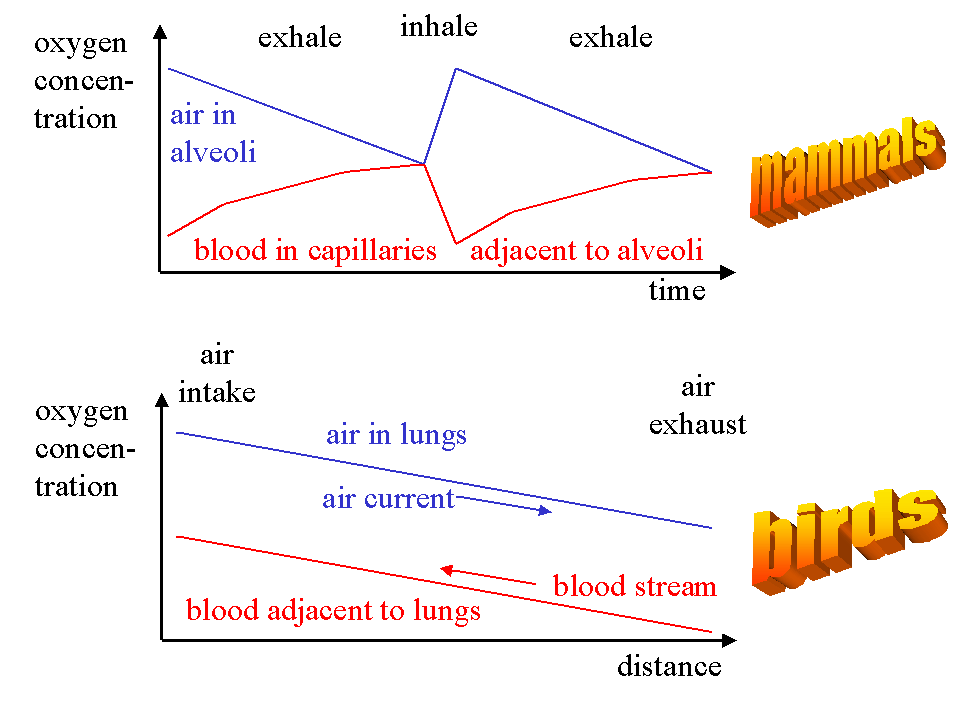Breathing by birds
|
B. Geerts and E. Linacre |
5/'99 |
The lungs of birds differ from those of mammals and other animals, which breathe in and out of fixed volume, as in a bellows. With this arrangement the rising concentration of oxygen in the blood in the lungs gradually approaches the falling concentration in the air during the brief period the air is inhaled (Fig 1). In the case of birds, there is a flow from an entry to a separate exit in the lungs, in counterflow to the blood (1). That means that air and blood go in opposite directions, as shown in Fig 1, so that the amount of oxygen in the air always exceeds the amount in the blood nearby. Such an arrangement allows the bulk of the airís oxygen to be transferred to the blood, so that the exit concentration in the blood actually exceeds the concentration in the outgoing air, as shown.

Fig 1. Diagram showing the bellowing breathing mechanism in the lungs of mammals, and the opposite directions of flow of blood and air through the lungs of a bird. Alveoli are small pockets of air surrounded by lung tissue rich in tiny blood vessels (capillaries). This is where the gas-to-blood exchange of oxygen and carbon dioxide occurs. The transfer of oxygen from the air to the blood is proportional to the difference in oxygen concentration.
This breathing mechanism of birds is a more efficient way of obtaining oxygen from the air, and allows birds to fly high in the atmosphere, where oxygen is scarce, but where the air exerts less drag on flight. As a result, small birds migrate at around 1,500 m elevation. Most migrating birds can fly up to 4,000 m, where oxygen pressures are not much above half those at sea level. The Andean condor is believed to fly up to 8,000 m (2). Climbers in the Himalayas have reported seeing birds called lammergeyers flying at 7,600 metres. One climber at 8,200 m reports a close encounter with a lammergeyer being chased by choughs, a kind of crow. A lammergeyer is the largest of the kite family of raptors, often called the Bearded Vulture, with a wingspan of up to 3 metres (3, p. 77). The record height for a flock of (unidentified) birds is 8,280 m, determined by radar (1).
Such elevations compare with the height of the sterile top of Mt Everest at 8,849 m, where most climbers need oxygen masks. Shepherds have lived at 5,200 m in southern Peru, and temporary mine-workers at 5,800 m (2).
References
(1) Burton, R. 1975. How Birds Live (Elsevier-Phaidon) 160pp.
(2) Velasquez, M.T. 1974. Encyclopedia Britannica 1, 860.
(3) Nicholson, N. 1975. The Himalayas (Time-Life) 184pp.